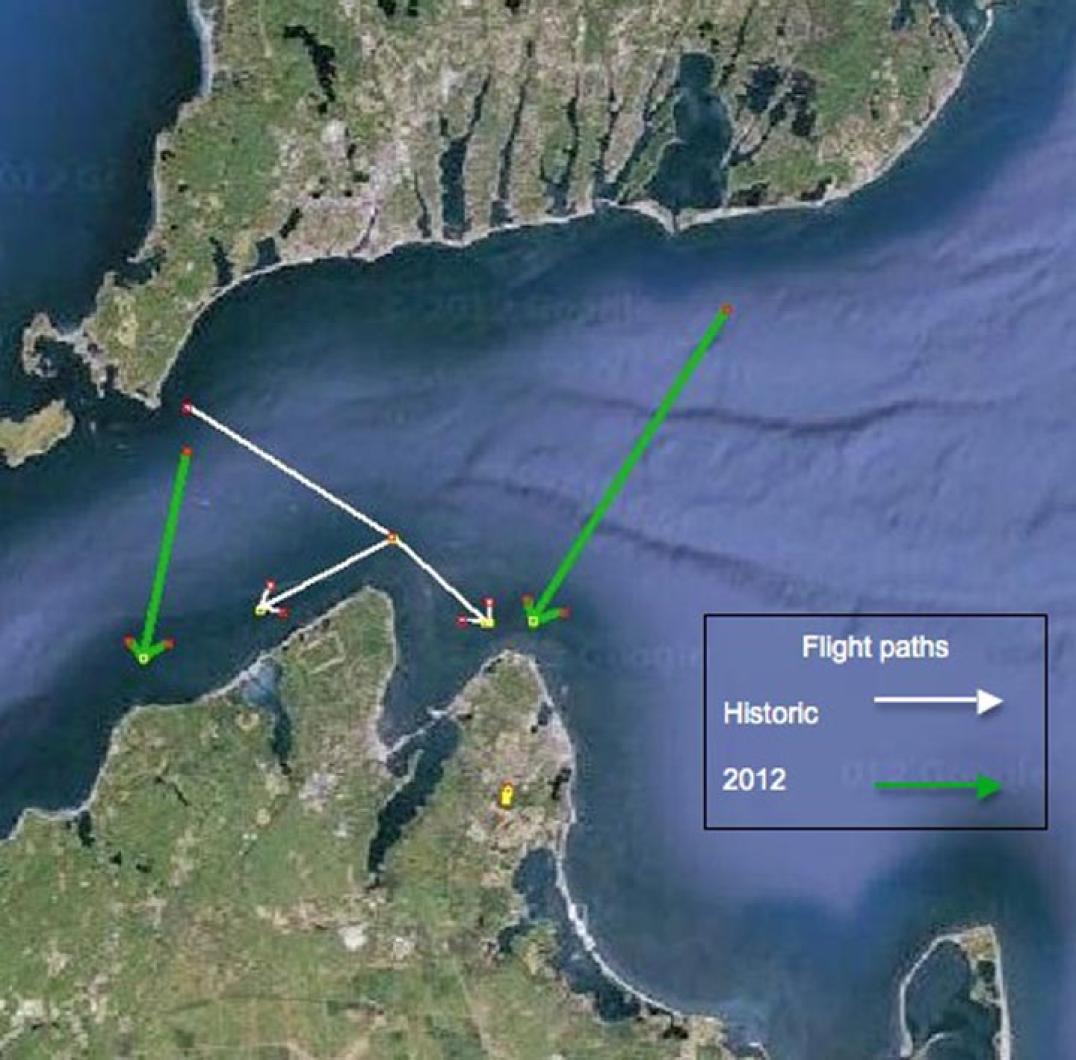Approximately 1,500 crows roost at the land bank’s Tradewinds Preserve off County Road in Oak Bluffs. This roost was noted this winter as a result of the recent Christmas Bird Count; Tom Chase’s field team counted these crows and found the second confirmed sighting of fish crows on the Island. Allan Keith’s field team could not find last year’s roost of crows off North Road in Chilmark, which included the first confirmed sighting of fish crows on the Island.
We probably have numerous overnight roosts of crows on the Island, but this one is unusual in that most of these crows spend their days foraging on Cape Cod, then in the late afternoon they fly across Nantucket Sound to roost overnight on the Vineyard. Then they fly back to the Cape in the morning. This behavior has generated a lot of discussion among birders and in this column.
Birders have known about this winter-time daily flight between the Cape and the Island for decades. And Susan Whiting, Matt Pelikan, Tom Chase and I have repeatedly talked about this phenomenon. We are convinced that great horned owls depredate crows from the nocturnal roosts, as the sleeping crows would be easy to catch by a hunting owl. And so the crows commute to the Vineyard to avoid this predation; great horned owls are widespread on the Cape while they were absent from the Vineyard until the 1990s and they still are scarce here. But we have never documented the phenomenon.
Every winter I teach an Adult Continuing Education of Martha’s Vineyard course called Birding 101, which includes a discussion of citizen-science projects where people systematically collect large quantities of data to contribute to our knowledge of the environment. The annual Christmas Bird Count is the most widespread and longstanding of all citizen-science projects. I decided to use this winter’s course to rigorously document this crow phenomenon.
So on the afternoon of Saturday, Feb. 4, my students — Kenny Ivory and Peter Meleney — and I went to the beach at West Chop to count the crows. We went there because it is the closest location to the Cape and many of us have observed crows departing the Cape from Nobska Point in Woods Hole. Tom Chase and Matt Pelikan both reported that these crows fly over their houses every evening, so I also recruited Penny and Don Hinkle (who had e-mailed asking about a morning congregation of crows near their house) and Margaret Curtin to go to the end of Monroe avenue on East Chop to count the crows.
The results of our work are detailed in Mark Alan Lovewell’s story in this issue of the Gazette.
One of the many things we do not know is whether any Vineyard crows also spend the night in this roost. On Feb. 13, I observed the staging area on the first hole of Farn Neck Golf Course, and I observed about 25 crows arriving from the general direction of Sengekontacket Pond. But to truly determine whether these are our crows or Cape crows will require maybe five groups of observers strategically sighted around the area. If you would like to assist collecting this information, please e-mail me at rculbert1@verizon.net.
The flight over the water and their behavior at the roost is a spectacular sight that you can observe easily.
Bird Sightings
Meanwhile, there are other birds to watch.
Shawn Taylor was excited to find eastern bluebirds at the Martha’s Vineyard Airport on Feb. 9, and also reports three mourning doves bathing in her birdbath.
Jacob Kramer found a red-winged blackbird and two eastern bluebirds at Quansoo on Feb. 12. Please look for individual blackbirds singing from a wetland as this is what will distinguish early migrants from our flocks of winter-resident blackbirds.
Gus Ben David reports that an immature peregrine falcon put on quite a show chasing his pigeons; the pigeons gain altitude rapidly to escape the falcon. He also reports that many people have gotten to watch the two peregrines — one adult and one immature — that have been frequenting the State Beach area.
On Feb. 14 I observed a merlin as it almost lost a game of chicken with my car. This first winter (brown) bird barely made it across the road; thank goodness for the 20-miles-per-hour speed limit along Wing Road near the Oak Bluffs school!
Please be vigilant, for you never know when you might see (or hear and want to see) an unusual bird.
There are lots of birds around, so please get out looking for them.
Report bird sightings to the Martha’s Vineyard bird hotline at 508-645-2913, or e-mail birds@mvgazette.com. Robert Culbert leads guided birding tours and is an ecological consultant living in Vineyard Haven.




Comments
Comment policy »